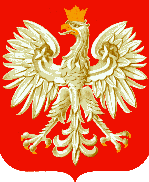
POLISH INFANTRY AND CAVALRY FOR THE GEAR KRIEG TACTICAL WARGAME
An unofficial Gear Krieg resource by Scott Lynch
 |
POLISH INFANTRY AND CAVALRY FOR THE GEAR KRIEG TACTICAL WARGAMEAn unofficial Gear Krieg resource by Scott Lynch
|
Infantry Units
Platoon HQ Section
Mortar Section
Rifle Squad
Machinegun Team
Cavalry Units
Saber Platoon HQ
Saber Section
|
1. Lieutenant 2. NCO 3. Observer 4. Runner 5. AT Gunner |
Pistol Pistol Rifle Rifle Anti-Tank Rifle |
Infantry Platoon Mortar Section
|
1. NCO 2. Mortarman 3. Mortarman 4. Mortarman 5. Ammo Handler 6. Ammo Handler 7. Ammo Handler 8. Ammo Handler 9. Ammo Handler 10. Ammo Handler |
Rifle Light Mortar Pistol Pistol Rifle Rifle Rifle Rifle Rifle Rifle |
|
1. NCO 2. Rifleman 3. Rifleman 4. Rifleman 5. Rifleman 6. Rifleman 7. Rifleman 8. Rifleman 9. Rifleman 10. Rifleman 11. Rifleman 12. Rifleman 13. Rifleman 14. Rifleman 15. Rifleman |
Rifle Rifle Rifle Rifle Rifle Rifle Rifle Rifle Rifle Rifle Rifle Rifle Rifle Rifle Rifle |
Infantry Squad Machinegun Team
|
1. Gunner 2. Spotter 3. Loader 4. Loader |
Medium MG Rifle Rifle Rifle |
|
1. Lieutenant 2. NCO 3. Trooper 4. Trooper 5. Trooper |
Pistol Rifle Rifle Rifle Rifle |
|
1. Lance Corporal 2. NCO 3. Trooper 4. Trooper 5. Trooper 6. Gunner |
Rifle Rifle Rifle Rifle Rifle LMG |
The MG Teams listed above were technically part of each rifle squad (giving them a total of 19 men), but are listed separately for ease of use with the GK system. Thus, each rifle squad should (barring disaster, misdeployment, and casualties) always be paired with one.
A Polish infantry platoon consisted of:
A Polish rifle company mustered three such platoons and a Company HQ. You can treat this as a double-sized Platoon HQ, and you can give them horses if you wish. The OB this information was drawn from says that each company was also equipped with a field bakery section, which is not listed here for what I hope are obvious reasons.
The Polish cavalry mustered Saber Companies and Rifle Companies, which were organized somewhat differently. To create a Rifle squad or platoon, simply take the infantry units described above and mount them all- the OB was nearly identical for both infantry and cavalry.
Saber Platoons (three of which plus a command HQ made up a Saber Company) were made up of four Saber Sections and one Saber HQ Section. Typically, two Saber Sections would carry LMGs as described above, one section would carry an AT rifle, and the fourth section would be all rifles.
Realistically, cavalry units on the battlefield of 1939 would have used their great mobility to place themselves for attack on foot in preference to openly charging an enemy armed with automatic weapons (though they did do so, recording spectacular successes and equally spectacular failures). The LMGs carried are modified Browning Automatic Rifles, and can be fired while mounted. AT rifles, mortars, and other heavy weapons can only be fired after the soldiers in question dismount and set them up.
Dug-in infantry have the difficulty of their Morale Test reduced to 4. Furthermore, charging cavalry successfully attacking a dug-in unit may only apply a +1 modifier to their MoS.
Cavalry may not make charging attacks in woods or swamp terrain.
Polish Armored Fighting Vehicles for the GK System (onsite link)
Lance Pennons of the Polish Army
Polish Cavalry Equipment